Ocean fertilisation is controversial, but politicians are starting to take it seriously. So will it ever be worth the hassle, asks Hayley Birch
Ocean fertilisation is controversial, but politicians are starting to take it seriously. So will it ever be worth the hassle, asks Hayley Birch
In January 2009, the Polarstern research vessel was treading water in the south Atlantic Ocean. The icebreaker, laden with some of the most sophisticated scientific instruments available aboard a ship, had carried its cargo of 48 scientists from Cape Town, South Africa, to a remote destination around 2000km north of the Antarctic coast. A few days before, the team had received the frustrating news that, after four years of planning, the German government had called a halt to its experiments just days before they were due to begin.
The future of the mission was riding on the outcome of an independent review ordered by the science ministry in response to protests from environmental campaigners. If the project -which involved pouring a solution containing 10 tonnes of iron sulfate into the ocean - was deemed to be environmentally unsafe, the crew of the Polarstern would have no choice but to turn the vessel around and head back to port.
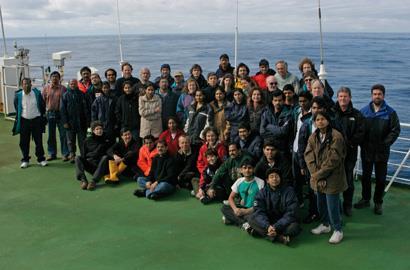
Looking back, lead researcher Victor Smetacek of the Alfred Wegener Institute in Bremerhaven, Germany, regards the whole affair as a storm in teacup. ’You could almost call it hysteria,’ he says. But his team’s plans were undeniably controversial. In studies that, according to some, would test international agreements under the United Nations’ Convention on Biodiversity (CBD), the researchers were intending to carry out the largest experiment to date using a geoengineering technique known as iron fertilisation. Their theory: that phytoplankton (algae), thriving on a diet of iron, would bloom and take up large quantities of carbon through photosynthesis. This carbon would be drawn down far below the surface when the algae eventually died and sank. Done on a large enough scale, the technique could offer a way to reduce the amount of carbon dioxide in the atmosphere.
Seeding the seas
The team aboard the Polarstern was eventually given the green light after a positive review from the British Antarctic Survey, Institute of Marine Research and German Federal Environment Agency - under the CBD, small scale iron fertilisation studies are allowed as long as they are first subjected to rigorous assessment. And so, on 27th January 2009, the scientists proceeded with their plans to fertilise a 300km2 patch of ocean, with modest success.
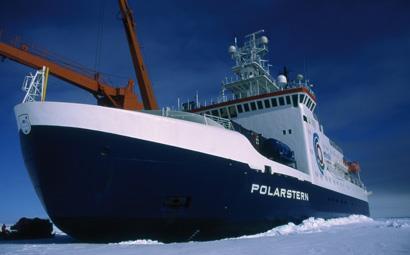
Since then, the political complexities surrounding iron fertilisation studies have developed somewhat. While a new assessment framework developed by the International Maritime Organisation now governs what and how ocean fertilisation activities can be carried out, political interest in geoengineering is growing as pressure to ’do something’ about climate change intensifies. Sprinkling iron on the ocean might seem a relatively straightforward solution next to a solar sunshade - and, according to Smetacek, could be our best option. ’There is no other alternative, no other approach that could take out more CO2,’ he argues. But no one knows for sure what the long term consequences will be and, crucially, whether they will be worth it.
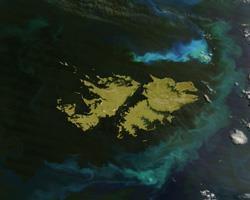
Smetacek’s study remains, marginally, the largest ocean fertilisation experiment ever carried out. Although no peer reviewed study has yet been forthcoming, the results are already in the public domain. Within two weeks of adding iron, the concentration of chlorophyll - the pigment enabling the algal cells to the harness the energy in sunlight - had doubled, indicating a substantial bloom. But the algae were soon feasted upon by crustaceans, with the end result being a slight, but ultimately disappointing, increase in transport of carbon to the deep sea.
The appetite of the local grazers was surprising, but there is another possible reason for the poor result. The type of phytoplankton inhabiting this particular area of ocean relies on silicon to build a key part of its tough cell wall. So in the absence of an infinite supply of silicon, adding iron has only limited potential for enhancing growth. In an earlier study in silicon-rich waters further south, however, Smetacek says his team observed substantial deep carbon transport after a large algal bloom.
Location, location, location
The outcome of these experiments illustrates the rather tricky problem of locating a suitable spot for iron fertilisation. As Richard Lampitt, an ocean fertilisation expert at the National Oceanography Centre in Southampton, UK, explains, the Southern Ocean, surrounding the Antarctic, ought to be the perfect place because it is abundant in nutrients. ’There you just add the iron and then the productivity will increase until it is limited by some other nutrient,’ he says. ’And it has been suggested that if you add iron to these regions, the oceans in these areas will take up carbon dioxide from the atmosphere and pack it away for more than 100 years.’ In less frequently studied low-nutrient areas, adding iron causes blooms for another reason - because nitrogen-fixing phytoplankton need iron to help them fix nitrogen from the air.
Location is crucial then, but experiments would also have to be on a much larger scale than has so far been attempted in order to prove that the carbon sequestration benefits would be worthwhile. All of the studies so far - 13 by independent researchers and two by commercial companies - have focused on small areas of ocean and lasted a matter of weeks. And despite the need for further research, the new assessment criteria now pose more of a challenge to those planning fertilisation experiments. Lampitt believes the criteria are a necessary and important part of a rigorous process that scientists should have to go through before undertaking large scale experiments. But they will most likely hamper his own organisation’s research, as one of 13 institutions that have recently formed the In-Situ Iron Studies (ISIS) consortium, of which Lampitt is co-chair.
So perhaps ISIS has larger scale projects in the pipeline? ’No,’ he says. ’We haven’t secured funding so far to do the fairly large experiments, which are very expensive.’ Meanwhile, the consortium is pushing for greater political recognition of the role iron fertilisation could play in addressing climate change. In June this year, ISIS representatives joined a meeting of the Intergovernmental Panel on Climate Change (IPCC) in Peru. The talks will feed into the IPCC’s fifth assessment report, due for publication in 2012. According to Lampitt, politicians are finally starting to take the idea of ocean fertilisation seriously - but it’s been a battle to undo the damage caused by ’a lot of misguided and unhelpful publicity’, he says.
Pollution or solution?
The media furore surrounding Smetacek’s 2009 experiment has afforded him some sympathy with Lampitt. ’Iron fertilisation experiments have been given a bad name,’ he agrees. Those who oppose iron fertilisation often do so on the basis that it is pollution; dumping iron into the sea, with potentially catastrophic consequences for marine life. But Smetacek argues that his own experiments have only caused algal blooms of the same magnitude as natural blooms - a claim that is backed up by satellite imagery. Lampitt adds that the amount of iron floating around from volcanoes, rivers, dust storms and the like is many, many orders of magnitude greater than the amount scientists are talking about adding artificially.
As regards the effects on marine ecosystems, Phil Williamson from the University of East Anglia in the UK, one of the authors of a recent report on iron fertilisation for the Intergovernmental Oceanographic Commission (IOC),1 is more philosophical. ’It would produce changes to the ecosystems, yes. Whether you consider those to be damage or not depends on... human evaluation and perspective,’ he muses. Besides which, he says, many of the damaging effects that have been suggested (see ’Facing the consequences’, below) - such as decreasing oxygen levels in deeper water, with potential impacts on biodiversity - are little more than speculation. Without further studies, however, there can be no hard evidence.
Facing the consequences
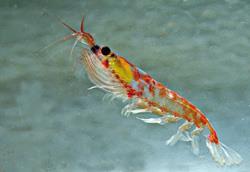
Concerns have been raised over the possible unintended consequences of ocean fertilisation:
- Phytoplankton growth could produce climate-relevant gases, such as dimethyl sulfide. Impact of trace gases on ozone levels may also be important
- Some studies have observed changes to the relative abundance of different phytoplankton species, with unknown impacts on food web
- Blooms could rob the ocean of other nutrients (like nitrate or phosphate), potentially reducing the productivity of surrounding waters
- Decomposition of sunken blooms could deplete dissolved oxygen stores, which are essential for marine life, and produce greenhouse gases more potent than CO2, offsetting any carbon benefit
- Carbonate shells dissolve in acid. Sequestering large amounts of CO2 could acidify the deep ocean, affecting the habitats available to shell-building species
The IOC-commissioned report concludes that ’it is not yet known how iron-based ocean fertilisation might affect zooplankton, fish and seafloor biota’. Equally though, it is not yet known how much carbon could be sequestered by the approach, and how long it would stay out of the atmosphere.
Keeping carbon down
According to Williamson, fertilisation ’won’t make a massive difference’. The IPCC estimates that the net uptake of carbon by the oceans is just over 2 billion tonnes per year, equivalent to 6 tonnes of carbon to every square kilometre of ocean. But by 2100, under a ’business as usual’ scenario, each person on the planet is expected to be adding to the atmosphere another 6 tonnes of carbon per year (the same as the current European average). In theory, it could be possible, says Williamson, to double ocean uptake of carbon by iron fertilisation. The trouble is, that would only solve around 5 per cent of the problem that we face in the future, since there are around 20 people per square kilometre of ocean.
Iron recycling by whale poo
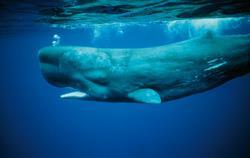
An interesting aside to the iron fertilisation debate is that carbon cycling can also take place through natural ’fertilisation’ activities - some of which we are only just beginning to understand. In 2010, Trish Lavery at Flinders University in Adelaide, Australia, and colleagues calculated that the iron-rich faeces of sperm whales could be responsible for as many as 400,000 tonnes of carbon being transported to the ocean floor each year (although they put half of this back into the atmosphere through respiration).3 The team’s calculations were enabled by data from artificially seeded blooms. Thus, one argument in favour of iron fertilisation studies is that they increase our understanding of the nutrient cycling processes that are important in marine ecosystems.
Lampitt agrees iron fertilisation is no silver bullet; rather it’s one of a stable of different geoengineering approaches that could contribute something to climate change mitigation. The most optimistic estimates suggest fertilisation could get rid of one out of the eight billion tonnes of carbon that human activity is belching into the atmosphere each year - if this was the case, he says, its contribution would not be trivial. Smetacek, on the other hand, sees more potential in iron fertilisation than in other carbon sequestration approaches, such as forestation. The amount of carbon that needs to be sequestered is equal to one third of terrestrial vegetation. That amount is virtually impossible to store on land, Smetacek argues. ’There’s no scope for it,’ he says. ’And the oceans are going to take this CO2 up anyway over the course of thousands of years - it dissolves in surface water and then that surface water will sink and transfer the carbon to the deep ocean. And in the meantime, the surface ocean is being acidified. Whereas what we are doing is diverting the carbon directly to the deep ocean where it will be completely lost.’
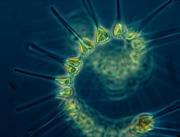
But will it? The big question is: how long can we keep the sequestered carbon down? Will it stay there for ever or will it leak slowly back into the atmosphere? This is a question that can only be answered by modelling. Anand Gnanadesikan and colleagues at Princeton University in New Jersey, US, have predicted that anywhere between 2 and 44 per cent of the carbon delivered to the deep ocean by fertilisation could be returned to the atmosphere within a century, with verification of the real proportion proving nigh on impossible.2 This verification issue is one of the reasons that private companies interested in iron fertilisation have had trouble arguing they should be eligible for carbon credits.
A worthwhile struggle
So now that commercial interest has withered, it’s left to academic institutes and networks like ISIS to lead the way. But in light of the media bashings, epic voyages to distant parts of the ocean and questionable climate benefits, isn’t it all a lot of effort for precious little reward? Smetacek doesn’t think so. He says ocean fertilisation studies will teach us more than just whether we can fix our broken climate with iron. ’There’s no basic science that is useless if it’s good science, if it increases your understanding of what you’re studying,’ he says. ’And it’s the same with these iron fertilisation experiments. We’re learning about how pelagic ecosystems - the plankton - how they function. And we don’t even know the basics yet.’
Hayley Birch is a freelance science writer and editor based in Bristol, UK
References
, Global Biogeochem. Cycles, 2003, 17, 1050 (DOI: 10.1029/2002GB001940)
3 T J Lavery et al, Proc. R. Soc. B, 2010, 277, 1699 (DOI: 10.1098/rspb.2010.0863)
4 V Smetacek and S W A Naqvi, Phil. Trans. R. Soc. A, 2008, 366, 3947 (DOI: 10.1098/rsta.2008.0144)






No comments yet